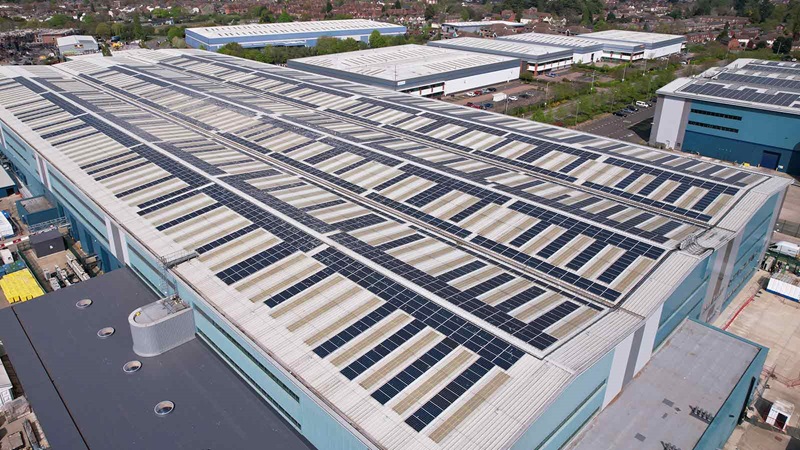Establishing resilience for the pharmaceutical sector
The pharmaceutical manufacturing industry is a complex and highly regulated sector that faces many challenges. From rising competition and prices, through to disrupted supply chains from ongoing international conflicts and natural disasters, the sector faces an uncertain future. Failing to maintain operations hits the bottom line, reduces investment in research and development and creates poorer outcomes for patients and the wider economy.
Thankfully governments around the world are recognising these challenges. The US Department of State, UNESCO and others are investing in science, technology and innovation to drive economic development and social progress.
In March 2023, President Biden’s 2024 budget included $210 billion for federal research and development projects, showcasing the US government’s commitment to ensuring robust health through the pharmaceutical sector and other scientific fields. Meanwhile in the UK, the creation of a new Department for Science, Innovation and Technology and an investment of £3.5bn - announced by the Chancellor in his Spring Budget - signals the government’s commitment to making the UK a science and technological superpower in the future.
Despite this, there remain immediate challenges that need to be tackled head on to ensure resilience and growth in the sector.
Delicate global supply chains
One of the many things we’ve learnt from recent events like Covid-19, the blockage of the Suez Canal and the Ukrainian conflict is the fragility of global supply chains and the lack of visibility of where and how items are sourced.
Pharmaceutical businesses aren’t alone in their reliance on global trade and oversees manufacturing. For many years the sector has been shifting manufacturing to emerging markets thereby operating a successful cost-optimised model. But reduced costs come at a price. Backlogs at shipping ports may cause short-term disruption and global events, trade wars and geopolitical risks threaten long-term reductions in capacity and capability. So, what’s the answer?
It is essential that firms develop robust contingency plans in case of unforeseen events. Intricate planning can build resilience throughout the supply chain with a clear focus on operational readiness and feasibility.
Another key step is for businesses to localise their supply chains. Instead of complex supply chains spanning many countries, shift them nationally or even regionally where possible. Keeping supply and manufacturing as close as possible to key sites and operations can create new jobs and boost productivity. While it’s often easier at the end of the chain than sourcing raw materials and skilled labour, operating closer to home can improve supply chain visibility and significantly reduce risk.
Decarbonisation
According to The Association of the British Pharmaceutical Industry, 80% of their members from the largest companies report net zero or carbon-neutral targets as a main priority to build resilience and sustainability. This priority is reflected across pharmaceutical businesses around the world.
One way of ensuring the long-term sustainability of assets is to decarbonise estates and processes. So how can you best achieve this?
Decarbonisation without a robust, tested, and funded delivery plan is destined to fail. The first step on any road to net zero is a detailed assessment of where your sites use energy, where you source energy from, and the various means at your disposal to drive greater efficiencies to reduce your overall energy load. This provides a solid baseline to justify activity and expenditure.
The methods of decarbonisation will vary budget to budget. However, the questions that define your activity remain similar; how do I make my assets more energy efficient? How can I source more renewable sources of power, or generate power from my sites? And what behaviours from my staff and suppliers can I influence to reduce energy demand across our operations?
Low carbon solutions to these challenges can range from installation of LED lighting and solar panels to recycled water systems and building management systems (BMS). But perhaps the most important element to focus on is your heating, ventilation and air conditioning (HVAC) system. This is essential for pharmaceutical operations but also very energy intensive. Utilising heat recovery, adaptive control and reducing air change rates to not only reduce energy usage of HVAC but also turn potential waste into energy across your site, could be a high impact decarbonisation step.
Don’t be afraid of change
This is the big one. It’s not always easy to adapt to change and manage transformation within an organisation. But the pharmaceutical industry’s response to Covid-19 proved that the sector could act quickly and effectively to save lives and deliver lasting outcomes. Just look at the fantastic testing facility delivered at the Rosalind Franklin Laboratory.
Proving resilience and adapting to ever changing goalposts demands a similar mindset. Within the built environment, we must remain passionate about creating places that matter and supporting the discoveries of tomorrow. And while the challenge is great, it’s not beyond reach. Continuing to be agile and working in faster, smarter, more sustainable ways will help build certainty, increasing resilience across the sector.











